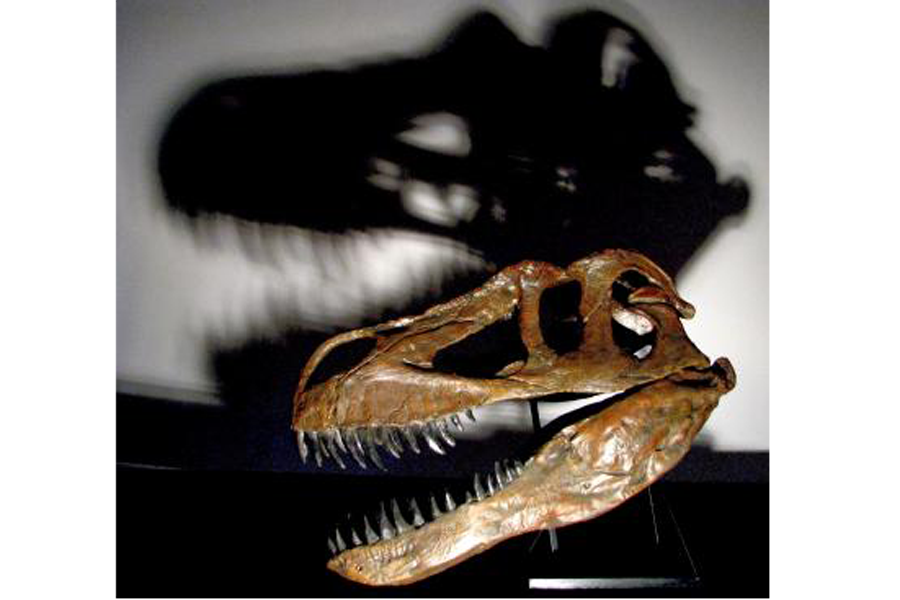Europe's most monstrous dinosaur had bird-sized teeth and Lithgovian legs
Loading...
Time-travel in Europe just got a lot less carefree, with the discovery of the hugest known land predator on the continent, with legs as long as the actor John Lithgow, and teeth the size of warbling wrens. It is called Torvosaurus gurneyi.
Pieces of an upper jaw and vertebra excavated fourteen years ago in Portugal's dino-rich Lourinhã Formation had been ascribed until now to Torvosaurus tanneri, a North American dinosaur whose immense, fang-filled head, muscle-bound thighs and tail, and small arms bore much resemblance to the New World's famed and feared Tyrannosaurus Rex.
But a careful analysis of these remains by two Universidade Nova de Lisboa paleontologists found that they differ significantly from other members of the Megalosauroida superfamily – enough to warrant a new species name.
Unlike its evolutionary cousins, this beast had fewer than eleven teeth in its upper jaw – but the ones it had grew as long as four inches. Its mouth was ridgier than the American Torvosaurus, with differently shaped bony areas between its teeth.
"This is not the largest predatory dinosaur we know. Tyrannosaurus, Carcharodontosaurus, and Giganotosaurus from the Cretaceous were bigger animals," said paleontologist Christophe Hendrickx, one of the study's coauthors.
"With a skull of 115 cm, Torvosaurus gurneyi was however one of the largest terrestrial carnivores at this epoch, and an active predator that hunted other large dinosaurs, as evidenced by blade shape teeth up to 10 cm."
And T. gurneyi, which may have roamed the earth a full 80 million years before T. Rex, was the biggest lizard known to have run the roads of prehistoric Europe in any epoch. The scientists, who published their peer-reviewed findings on March 5th in the open-source Public Library of Science (PLOS), estimate the live animals may have weighed four to five tons – on par with a large Asian elephant, but quite a bit springier.
Parts of a thigh bone and shin bone found elsewhere in the same site, with estimated lengths of 3.6 and 2.7 feet when intact, may help fill out the picture. The scientists tentatively ascribe these bones – which suggest 6'4" legs – to T. gurneyi, based on their size, location, and uniquely Megalosauroidean features. Embryonic remains found near the jaw fragment among a clutch of prehistoric dinosaur eggs, may have belonged to the same species.
Dinosaur enthusiasts who have enjoyed the illustrated Dinotopia book series, about a mixed human-animal society of shipwrecked humans and dinosaurs, have special reason to celebrate this discovery.
“The scientific name of the species honors artist James Gurney, creator and illustrator of the book series Dinotopia, and excellent pedagogue in the world of art,” Mr. Hendrickx said, in a press statement.








